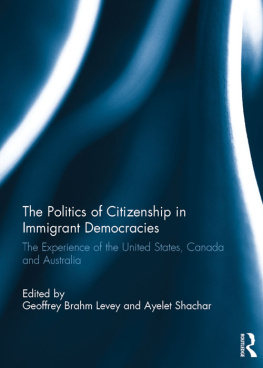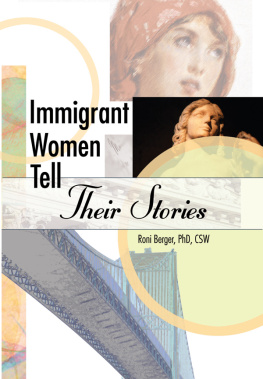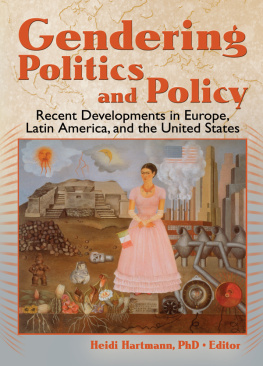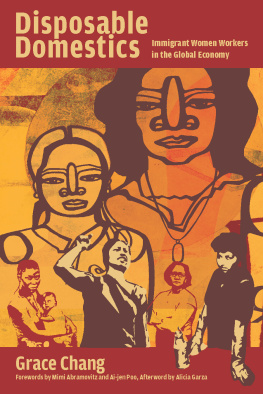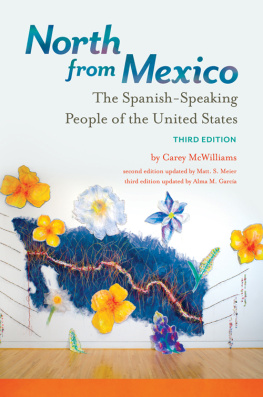Thirty-five years ago the topics of immigration and women would not have aroused much interest in the scholarly and professional marketplaces. But from different sources and for different reasons, both have become important research and public-policy issues. In 1986, Nancy Foner commented: Migrant women have emerged from academic invisibility Female migrants have become a recognized presence.
Immigration as a topic for research and debate emerged largely because Congress, after a long hiatus, began to debate immigration issues and enacted new standards and policies. On October 27, 1990, the U.S. Congress passed the first major immigration bill since 1965. The bill represented the first comprehensive revision of immigration law in sixty-six years. It increased the number of immigrants admitted per year from 540,000 to 700,000 for at least the first three years and it more than doubled the number of immigrants allowed entry because of their job skills. In addition, more than half of the visas were to be set aside for families of U.S. citizens and permanent residents.
Social scientists and public-policy analysts began focusing on immigration some thirty years ago when the first group of Cuban refugees was admitted to the United States following the Castro takeover in Cuba. The Cubans were the first in a series of refugees to be admitted to the United States in the post-World War II era. Shortly before the Cubans were admitted, 21,000 Hungarians came in under refugee auspices following the 1956 revolt, and prior to that 280,000 displaced persons were admitted in 1948. Subsequent to the entry of the first group of Cuban immigrants, Vietnamese, Soviet Jews, more Cubans, and other Hispanics from Central American countries were admitted as refugees in the 1970s and 1980s. In addition, growing numbers of immigrants have come across the border from Central American countries and Mexico, as well as from the Philippines, Korea, and other Asian countries.
The establishment of a Presidential Commission on Immigration in 1981 to study the social, economic, and cultural impact of immigrants on American society and to make recommendations about numbers and conditions of admission contributed to an intellectual reawakening of interest in the importance of immigrants to American society. Over the past two decades, this has resulted in numerous monographs and articles on immigrant entrepreneurs, the adjustment and absorption of refugees, the social mobility of various immigrant groups, language facility, and immigrant childrens academic success.
Tracing the development of interest and work on women migrants involves recognition of the importance of the appearance of a womens movement in the late 1960s. In part as a function of that movements visibility, interest in topics about women and funding for research on womens lives skyrocketed. Any topic concerning women was considered intellectually interesting, important, and highly marketable. The spate of recent work by social scientists on women migrants can be easily explained by the enormous attention that any topic on women receives. But coupled with the renewed interest in immigration, it is all the more obvious why social scientists have been paying so much attention to patterns of female migration.
With these explanations as background, it is important to note that the current studies of immigrants tend to have a somewhat different focus and to employ different methods than the work done during the earlier periods of immigrant research in the 1920s and 1930s. Many of the studies emanating from that period were done by the so-called Chicago School of Sociology, which focused on patterns of adaptation, acculturation, and assimilation by different immigrant communities into the larger American society. The methods for studying the communities were often observational and biographical. Scholars examined life histories in the form of letters, diaries, and other direct first-person accounts that explained transitions and passages in individual lives, in families, and in larger units. Studies reported on conflicts between immigrant parents and their first-generation American-born offspring. Accounts dealt with how quickly and in what form different immigrant communities became Americanized through loss of accent, change of names, style of dress, choice of foods, and movement into nonethnic neighborhoods. The unit of analysis was often the family or an entire immigrant community that had recently established itself in an urban neighborhood. Thomas and Znanieckis The Polish Peasant in Europe and America is one of the classics to emerge from that era.
The revival of interest in immigrants in the 1970s, 1980s, and 1990s did not restore the earlier research agenda either substantively or methodologically. The issues today tend to be different than they were seventy and eighty years ago, and the methods have changed as well. Today, economic issues are more likely to be the dependent variables. Thus, data on labor-force participation, educational background, job skills, work ethic, income, and mobility are collected through surveys or from archival sources such as the U.S. Census. The focus is more on individual behavior, which is then aggregated, than on families or whole communities. There are fewer observational studies, and researchers are less dependent on subjective accounts.



